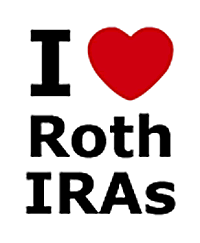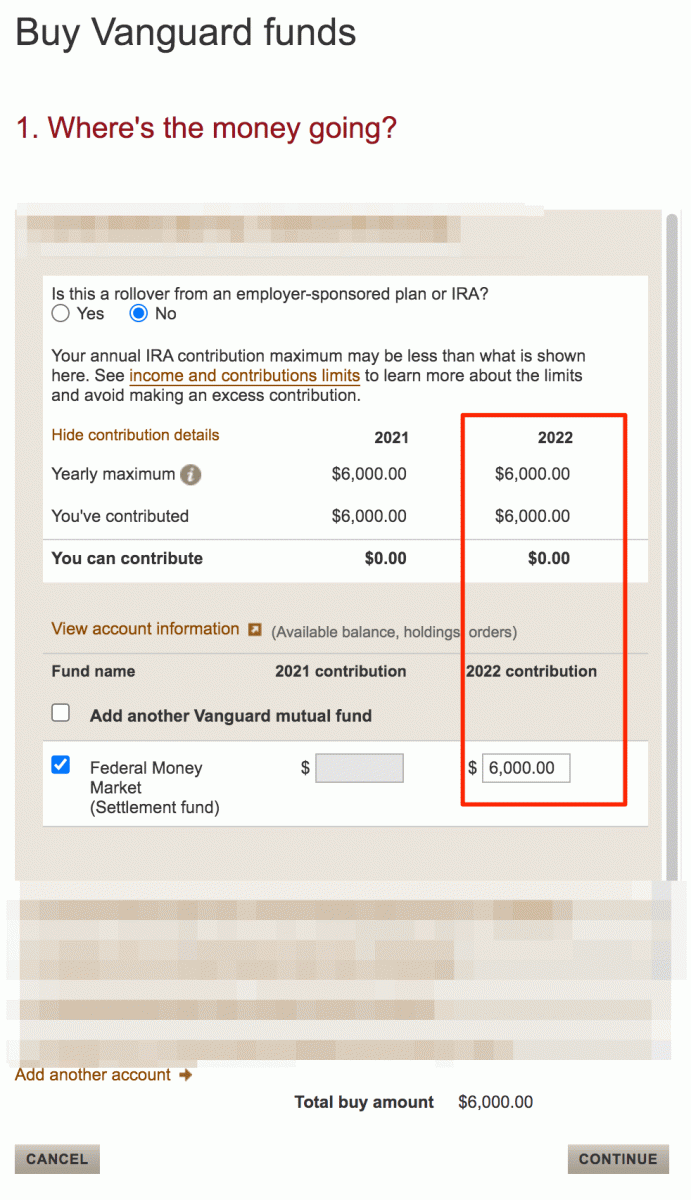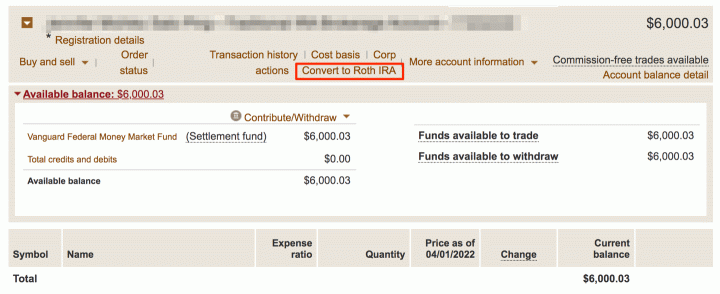 The official IRA contribution deadline for Tax Year 2021 is April 15th, 2022. However, I choose to use April 15th as the informal deadline for my same-year IRA contributions (Tax Year 2022). By around April 1st, I have usually finished filing my income taxes and thus have handled any expected tax bills. I also have the first quarter of dividends arrive in my brokerage accounts, so I also have funds ready to re-invest. The optimal time would actually be make my contributions on January 1st, but sometimes we just have to settle for “good enough”.
The official IRA contribution deadline for Tax Year 2021 is April 15th, 2022. However, I choose to use April 15th as the informal deadline for my same-year IRA contributions (Tax Year 2022). By around April 1st, I have usually finished filing my income taxes and thus have handled any expected tax bills. I also have the first quarter of dividends arrive in my brokerage accounts, so I also have funds ready to re-invest. The optimal time would actually be make my contributions on January 1st, but sometimes we just have to settle for “good enough”.
If your Modified Adjusted Gross Income (MAGI) exceeds the limits for a direct Roth IRA contribution ($144,000 for singles and $214,000 for married filing joint for tax year 2022), you may still be eligible for the “Backdoor” Roth IRA. Christine Benz of Morningstar has a excellent summary of Backdoor Roth IRA concerns.
A backdoor Roth is simple enough and should be tax-free in many cases. An investor who earns too much to make a direct Roth IRA contribution simply opens a traditional nondeductible IRA–available to investors regardless of income level. Shortly thereafter–and here’s where the backdoor part comes in–he converts it to a Roth IRA, another move unrestricted by income limits. Assuming he has no other IRA assets, the only taxes due on the conversion would be any appreciation in the investments since he opened the account. That taxable amount should be limited, assuming he converts the money promptly and/or leaves the money in cash until the conversion is finalized.
Here’s my even-shorter version of the tips:
- First, check if you have other pre-tax traditional IRA assets such as a rollover IRA. Converting to a Roth IRA may subject these assets to taxes on a pro-rated basis.
- Get rid of these pre-tax IRAs, if possible, by rolling them into an employer 401(k), 403(b), or 457 plan instead. Self-employed business owners can also roll into a Solo 401k.
- Contribute and then convert to Roth quickly. Make the non-deductible Traditional IRA contribution, invest for a day or two in cash, and then quickly convert to Roth. The IRS has clarified that no waiting period is required, making it better to do it right away to avoid any tax complications.
- Repeat at the beginning of every year. Just keep doing it every year, as soon as you can, and build up that precious Roth IRA balance that can grow tax-free forever with no required minimum distributions. Ignore news about the option “maybe” going away until it actually goes away.
Here’s our simple three-day process at Vanguard.
Day one: Make non-deductible contribution to a Traditional IRA account. You could fund in various ways, I exchanged from funds within my Vanguard taxable brokerage account. Just put it in Vanguard Federal Money Market temporarily.

Day two: Go to “Balances & Holdings” page and find the “Convert to Roth IRA” link. Complete required steps.

Day three: Your traditional IRA balance is now $0. Invest the funds that are now in your Roth IRA. In this case, I would have a taxable gain of just $0.03, which simply rounds to zero.
Note: There is still some debate about how much time should pass between the non-deductible Traditional IRA contribution and the Roth conversion. Some people believe that the 2017 Tax Cuts and Jobs Act (TCJA) officially signaled acceptance of this move. Others still want you to wait either for a monthly statement or even a full year in between the steps. I’m not a tax attorney and this is not tax advice. This is just what I did and I don’t lose any sleep over it.
 The Best Credit Card Bonus Offers – 2025
The Best Credit Card Bonus Offers – 2025 Big List of Free Stocks from Brokerage Apps
Big List of Free Stocks from Brokerage Apps Best Interest Rates on Cash - 2025
Best Interest Rates on Cash - 2025 Free Credit Scores x 3 + Free Credit Monitoring
Free Credit Scores x 3 + Free Credit Monitoring Best No Fee 0% APR Balance Transfer Offers
Best No Fee 0% APR Balance Transfer Offers Little-Known Cellular Data Plans That Can Save Big Money
Little-Known Cellular Data Plans That Can Save Big Money How To Haggle Your Cable or Direct TV Bill
How To Haggle Your Cable or Direct TV Bill Big List of Free Consumer Data Reports (Credit, Rent, Work)
Big List of Free Consumer Data Reports (Credit, Rent, Work)
So to add some details (please correct is something is wrong):
1. Get rid of these pre-tax IRAs: If you have a pre-tax IRA, do a trustee to trustee or direct transfer to a 401K plan that accepts these assets. Can you use a self employed 401k that was setup a long time ago, but if no longer being funded because you are no longer self-employed???
2. On your tax returns, you will report the distribution but will have NO tax due (??) The cost basis carried over.
3. Then start with the ROTH.
1. Yes, as long as the official plan documents for your Solo 401k say that you can accept a Traditional IRA transfer, then that shouldn’t be a problem. Each Solo 401k is different, however, just like each 401k plan.
2. You fill file Form 8606 at tax time to report Nondeductible IRA contributions. This documents that you didn’t get a tax break upon the contribution, so the rollover does not generate a taxable event for that contribution amount.
Jonathan,
Thank you for this guide. As someone who recently surpassed the Roth income limits, the timing of this information is perfect. I have an existing Vanguard Roth that I stopped contributing to. If I follow your method, will it create a new Roth account for every conversion I perform, or will it simply be absorbed into my existing Vanguard Roth account? Thank you!
You can roll over into your existing Roth. That’s what I do. Just one Roth in the end.
This is different than what you propose above, but your post sparked a thought. Previously I’d been making deductible contributions to my traditional IRAs the tax year after. (IE: contributing for ’21 around March ’22 when I do my taxes). Part of the reason I did it later is because it’s easy to have tax software spit out the max contribution limits for myself/spouse after entering all tax data (which the $ amount varies but is limited for myself – I believe due to maxing out 401k contributions). I hadn’t thought about making this deductible contribution a year earlier and the benefits of doing so. In this case though, I feel like I’d struggle to know the $ amount of deductible contributions I could make since I’d be doing that before actually earning the money over the year (bonuses can fluctuate). Probably possible to estimate it, but I could be off some. I just did some reading and it sounds fairly straightforward to correct excess contributions the following year before submitting the tax return. Has anyone done this before successfully? Is it a headache?
I’ve read that the Build Back Better Act would eliminate backdoor Roth. Any concerns that it might get passed in 2022 and the transaction will have to be reversed?
What do you do with the $0.03 left over? This has been happening for years and I’ve never been sure what to do with it.
It’s technically a taxable gain when rolled over into Roth, but I always round to the nearest dollar on the tax returns.